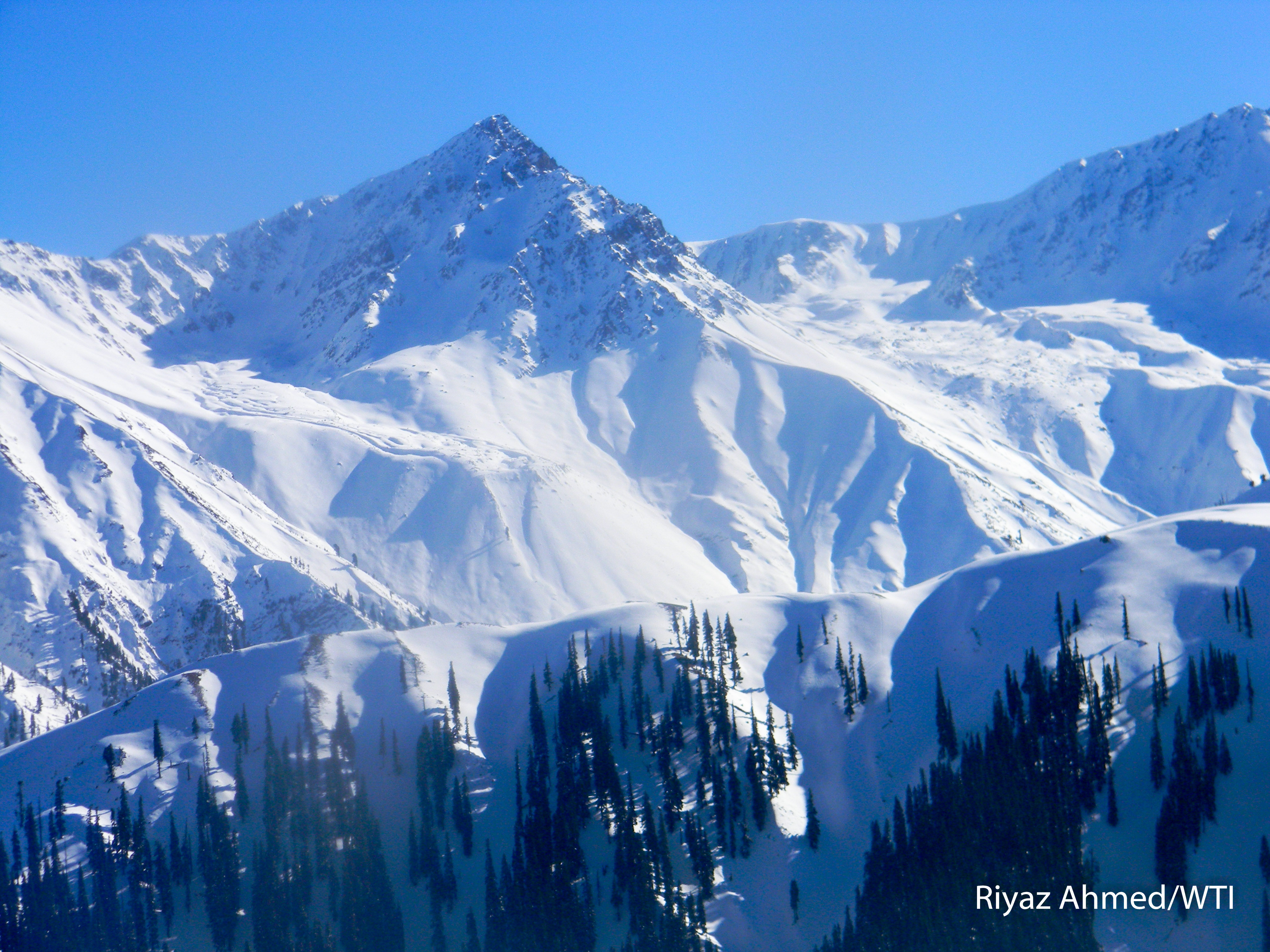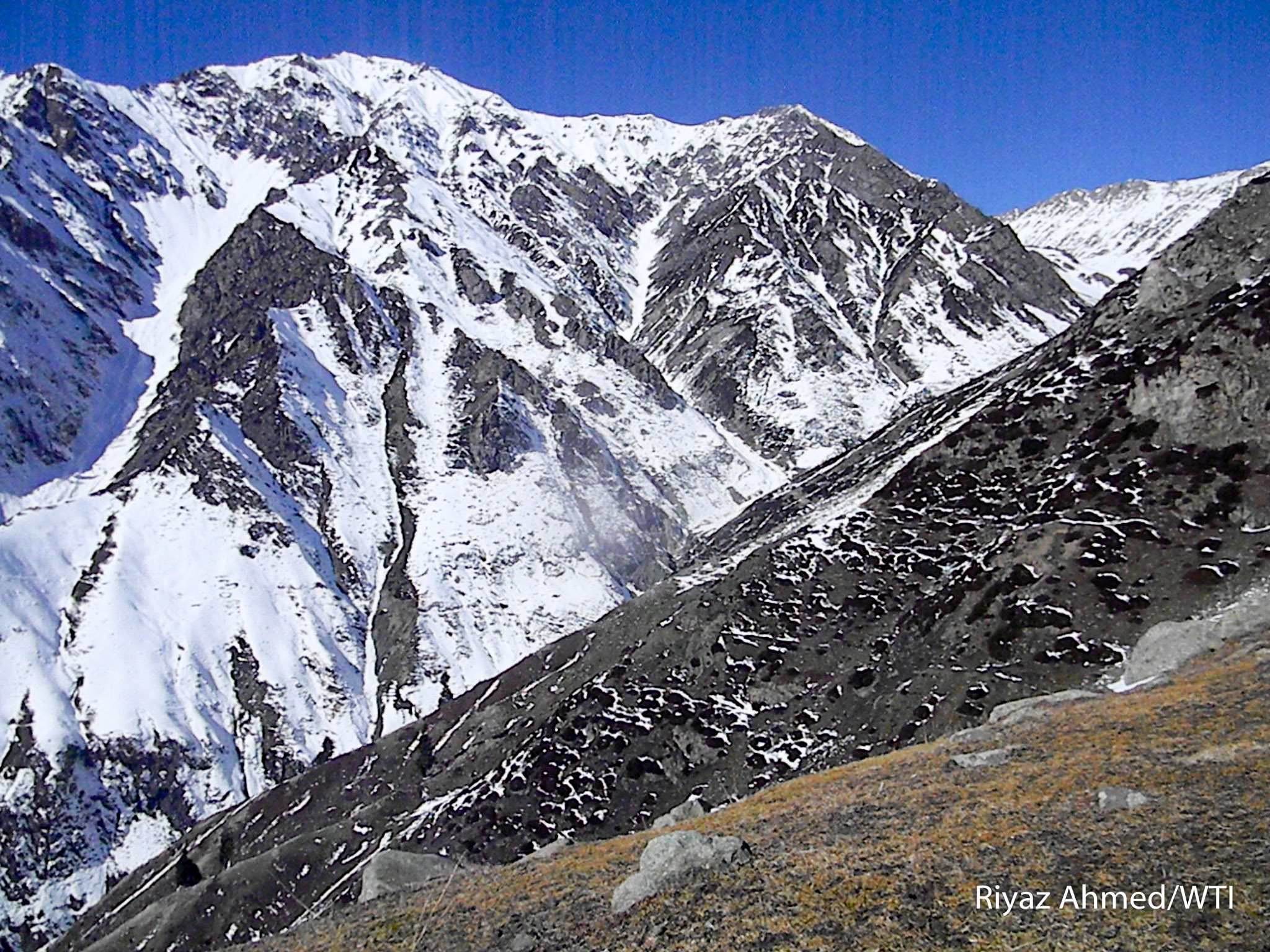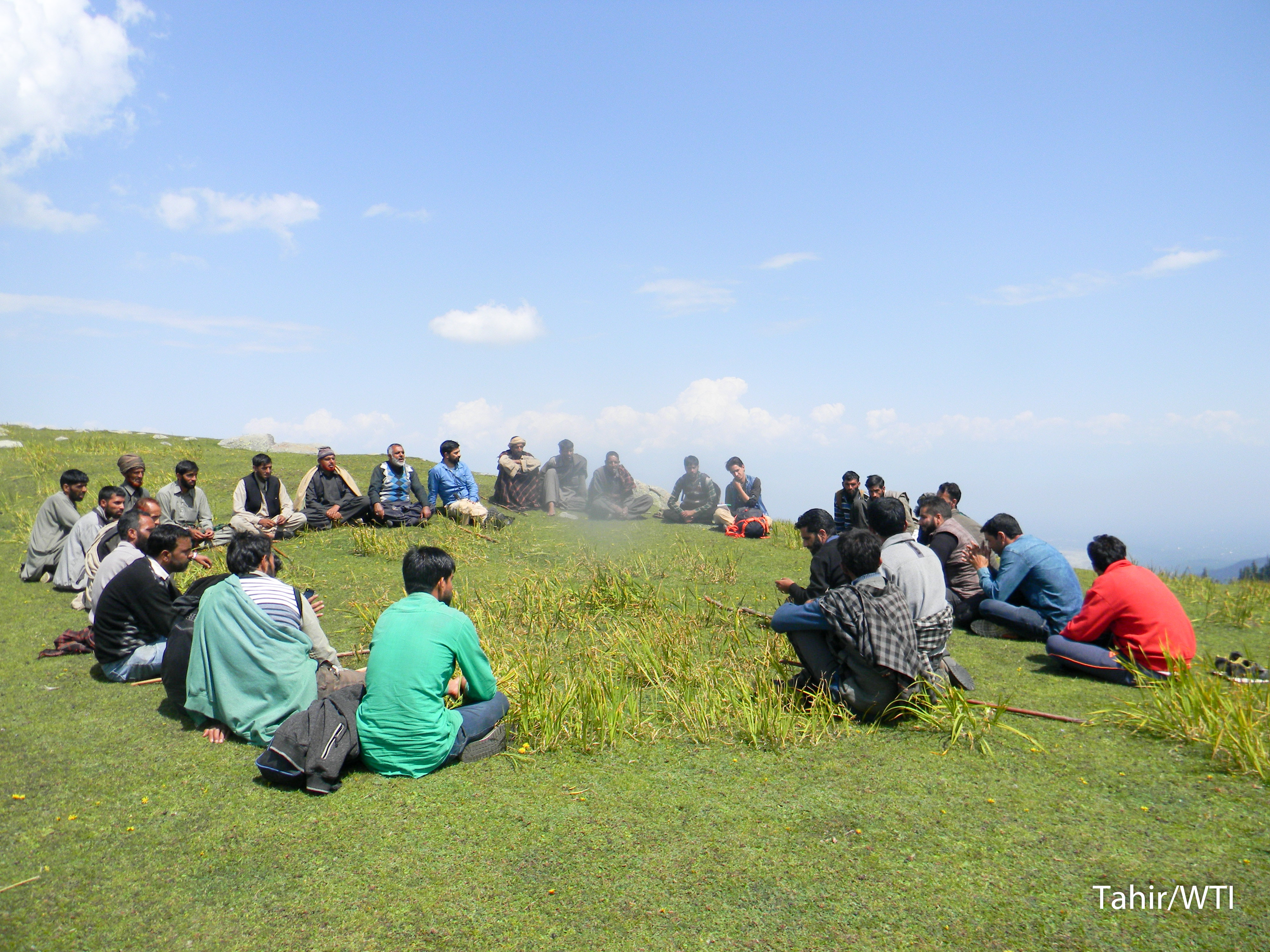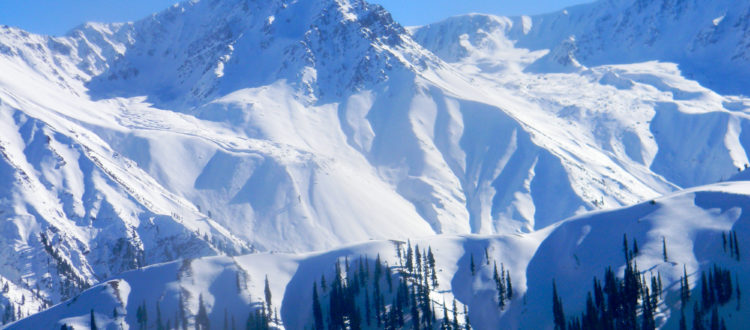A Paradise on the Brink
Once a remote and untouched land of alpine meadows, subalpine shrubberies, high altitude lakes, snowy peaks, glaciers and crystal clear streams, Hirpora Wildlife Sanctuary (WLS) is now confronted with overexploitation and habitat destruction. The snow trout, the majestic markhor, the agile musk deer, the rare and beautiful medicinal plants such as Saussurea sacra and Primula reidii have all started disappearing, writes Riyaz Ahmad.
Hirpora WLS is one of the most beautiful landscapes in the state of Jammu & Kashmir. It is dotted with high altitude lakes and surrounded by snow-clad peaks. There are velvety alpine and subalpine meadows decorated by colourful flowers and bubbling ice-cold springs. It is a veritable paradise for several species of plants, birds and threatened mammals.
The Hirpora landscape is divided into smaller valleys by hillocks and forests, and each valley is drained by crystal clear waters that once brimmed with native snow trout, a potential prey for the Eurasian otter. The sanctuary is the catchment for the Rambiara and Aharbal nullahs, which irrigate at least three districts and are important tributaries of the Jhelum River. The subalpine and alpine meadows that dominate the landscape absorb rainwater and play a role in keeping the glaciers intact, enabling the nullahs and streams to flow throughout the year. These waters, when they join the Jhelum, are used to generate electricity. People in fringe villages also benefit directly by using the nullahs and streams to irrigate their orchards and fields.
Preserving the catchment preserves the ecological balance of the area. Hirpora’s verdant pastures provide sustenance to wild herbivores (including rare ungulate species such as the markhor and musk deer), and a healthier prey population for carnivores reduces the probability of human-wildlife conflict in the fringe villages. Further, the meadows cater to hundreds of migratory herder families with thousands of heads of livestock.
Thousands of tourists, students and locals visit Hirpora to soak in the area’s natural beauty – now known as ‘nature bathing’. For the locals and the migratory herders the sanctuary is a free source of gucchi (wild Kashmiri mushrooms that are considered a luxury item), wild vegetables, medicinal plants, fodder, fuelwood, sand, stone, fresh air and clean water. The famous potatoes, walnuts and apples grown in these fringe villages are said to be because of the microclimate the Hirpora catchment has created. (The locals also used to catch snow trout using sustainable traditional methods, especially during the autumn, as an important source of protein.)

Hirpora’s natural bounty benefits all local stakeholders, but there seems to be an alarming lack of awareness about the need to safeguard it. Instead, the area’s natural resources are facing a tragedy of overexploitation – and as Gandhiji said, there is more than enough to provide for man’s needs but too little to satisfy his greed. The balance between conservation and development has tilted inexorably towards development, even if it comes at the cost of all these benefits and the destruction of our natural heritage.
The Ecological Costs
As Hirpora WLS is the catchment for the Rambiara and Aharabal, the degradation of its habitat will directly affect water flow in these nullahs, which in turn will severely impact the dependent populace. This is important not only in terms of horticulture or agriculture: since the catchment absorbs most of the rainwater, flash floods will result if overgrazing and habitat deterioration continue unchecked. (This has already been witnessed in 2014 and during the current rains in June and July 2018.)
Habitat degradation could also lead to an increase in human-wildlife conflict, with species like the brown bear moving to lower areas in fringe villages in search of food. Further, the decline of wild ungulates could lead to the displacement of wild carnivores such as leopards and wolves to neighbouring villages in search of prey.
The irony is that Hirpora was notified as a wildlife sanctuary to save the markhor, the flagship species and the world’s largest wild goat, a rare capra, but the focus now seems to be entirely on developing the Mughal Road: the conservation of this protected area has become the lowest priority. I would say all stakeholders – researchers like myself, the Department of Wildlife Protection, government agencies, the livestock herders, the local villagers, civil society, the judiciary and the media – bear the responsibility for the deterioration and degradation of this invaluable ecosystem.

For example, I as a researcher am responsible for not highlighting the issue in time and being a little soft on some serious concerns. Perhaps I have been selfish so that my research in the area continues smoothly to get better career opportunities and have the necessary permissions processed without any hassle. Politicians want their vote banks to be happy, no matter the environmental cost. Local officials sometimes want to keep their political and administrative bosses happy and sometimes it is to avoid the wrath of politicians. The inhabitants of fringe villages want to reap the benefits of the Hirpora landscape but refuse to acknowledge the impact of their transgressions on it. Migratory livestock herders and local shepherds are shifting to non-traditional herding practices to earn extra cash, no matter if these practices are unsustainable and will cause long-term damage. And the government, of course, wants to demonstrate its commitment to development, taking decisions in haste that have a terrible impact on the ecology and environment.
The Price of Silence
Our collective ignorance has brought this beautiful and invaluable ecosystem to the brink, but we cannot afford to let Hirpora suffer in silence. It is the duty of State, citizens and Court to protect Nature/Environment. We all have to stir our conscience to save our natural heritage before it is too late.
The Department of Wildlife Protection has to be more stringent in its implementation of the laws that protect our ecosystems. Violators must be dealt with exemplary fashion, since ecosystems once destroyed are hard to restore. The Department has the power but must learn to hold firm under pressure. They have a difficult job since I know that nature conservation is among the lowest priorities of the local authorities. Our politicians and policymakers have to be made aware about the importance of nature conservation, since many of them are environmentally illiterate or have other priorities.
Civil society too must play a greater role in highlighting and protesting against violations that destroy our wild habitats. The media in Kashmir has little interest in environmental concerns; I know they feel they have more important issues to cover, but they must remember that Kashmir is Kashmir because of its natural heritage.
There is no doubt that development is needed but we have to be wise about it. By this I mean we have to explore options of saving the more fragile and critical ecosystems: diverting roads, transmission lines or other developmental activities through less ecologically important areas, promote eco-tourism instead of mass tourism in such fragile areas.
We also have to make the relevant agencies accountable for violating the pre-conditions set for any development activity. For instance, the transmission line that now passes through Hirpora WLS should have come via the main Srinagar-Jammu Highway instead. After the clearances and permissions the power transmission company should have adhered to the pre-conditions for constructing the transmission line. It bulldozed the critical markhor habitats to construct link roads to the transmission poles, instead of using porters and ponies to transport the construction material, just to save some bucks. To make matters worse, the District Magistrate openly supported the company when employees of the Wildlife Department wanted to put a stop to these violations. This violation stopped only after the continued warnings of the Wildlife Department and when media highlighted it. After the damage had been done the company was made to pay some cash compensation, which is meaningless since the fragile slopes and critical markhor habitats that were destroyed will take decades to recover.
Similarly, with the Mughal Road that connects Kashmir to Poonch and Rajourie, a strategically placed tunnel could have prevented much of the destruction. The Road Construction Company also violated pre-conditions by dumping the muck in the markhor habitat and did not construct breast walls in time to stop the erosion and landslides along the important habitats. This has become a pattern: these entities initially beg for permissions and environmental clearances and promise to fulfil certain pre-conditions, but work at their will once the clearances have been received. One of the pre-conditions was to reduce livestock numbers in Hirpora WLS, which on the contrary have increased. The National Board for Wildlife and the Supreme Court must establish a mechanism to regularly monitor such projects and punish the relevant organisations for violations and/or a failure to meet pre-conditions while the project is ongoing, rather than after the damage has been done.
Some simple workarounds can also be used to mitigate the impact of developmental activities. The traffic on the Mughal Road, for instance, plies 24×7 and there are no speed breakers or speed limits in place. The disturbance is huge in once a silent landscape. Markhor sightings have become rare and there have been a few wildlife road kills too. In several parts of the country, traffic is not allowed during the night hours on roads passing through protected areas. Can we not apply similar regulations on the Mughal Road, allowing traffic from morning to evening with speed limits and other precautions in place?
To save our natural heritage we must act now; we must make the right choices and support the right decisions. Do we want a repeat of the 2014 floods? Do we want our children to be like those in Delhi, choking on the very air they breathe? As one of my friends rightly said, we can live without mobile phones or vehicles, but not without clean air and water.
As a beginning, Wildlife Trust of India (WTI) and the Department of Wildlife Protection have initiated a process of engagement with major local stakeholders to conserve the Hirpora ecosystem. We are conducting consultations with traditional herders to motivate them to avoid/cease non-traditional herding practices. Awareness programmes are being conducted to sensitise local students, the future custodians of our natural heritage. Awareness is being spread among other stake holders such as local people, migratory herders and security forces. We are also exploring additional livelihood options such as ecotourism to benefit dependent stakeholders.

It is vital that we act swiftly and work together to save the Hirpora landscape. The sustained support of policymakers, the common masses and the media will be vital to preserve this fragile ecosystem for our future generations.
The author is the Project Head of Wildlife Trust of India’s Markhor Conservation Project in Jammu & Kashmir









